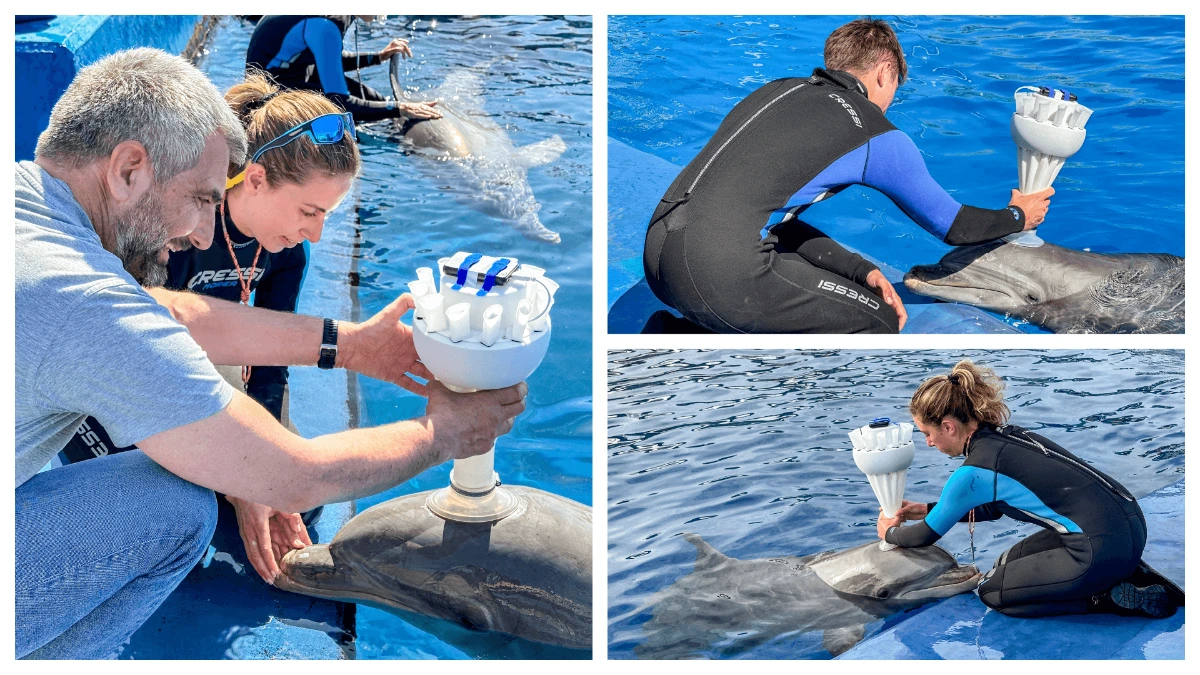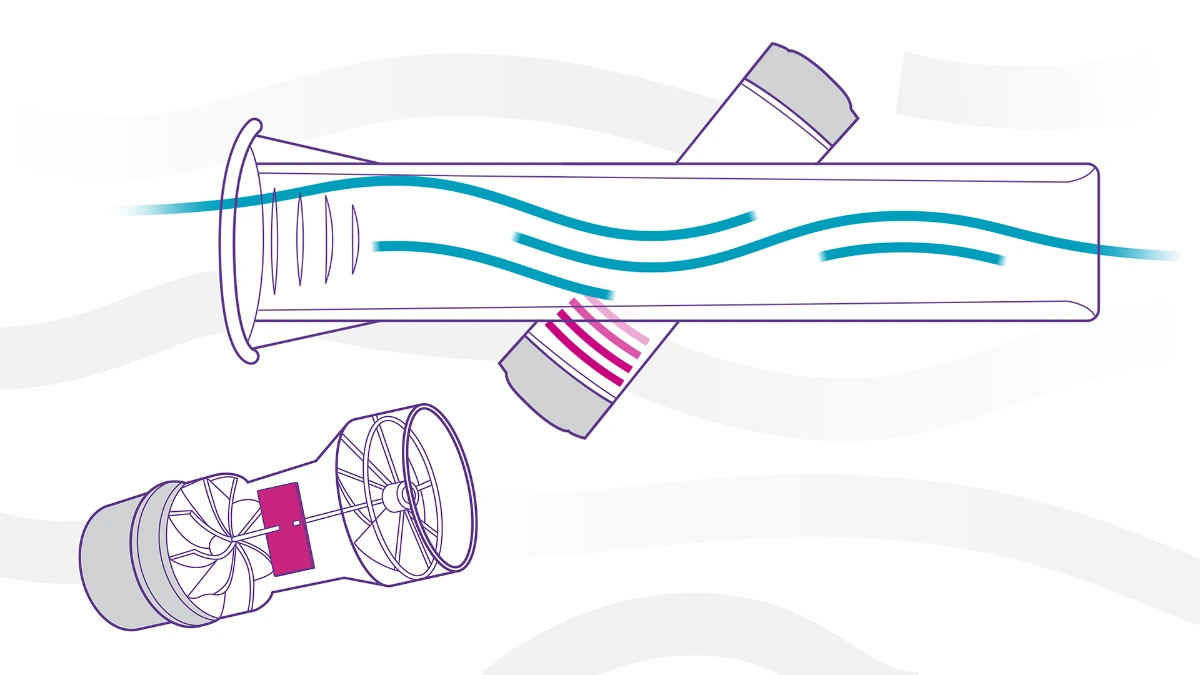ndd TrueFlow Technology used to research pulmonary disease in cetaceans

Dolphins and other toothed whales of the family Cetacea (“cetaceans”) are remarkable respiratory champions, capable of reaching exhalation flows of 160-200 liters per second and exchanging up to 90% of their total lung capacity in a single breath within less than one second. The comparable values for a human are about 10-14 liters per second and 70% of total lung capacity! This impressive breathing capacity is partly due to their porpoising behavior while traveling, where they briefly leap out of the water and complete their breath before submerging again. Notably, their breathing cycle starts with a powerful exhalation, followed by an inhalation and a respiratory pause lasting between 20-40 seconds. Despite their low breathing frequency, their respiratory minute volume is comparable to that of similarly sized mammals because their tidal volume is much larger than that of humans.
Respiratory disease poses a serious issue for dolphins #
Dolphins face a major challenge, though: respiratory disease, which is one of the leading causes of mortality and morbidity in dolphins in the wild and those housed in human care. Although disease can be detected using blood and blow samples, or by using ultrasound, computer tomography (CT), or radiographs, many of these methods are logistically difficult to apply to fully aquatic mammals. These methods also do not provide information on functional changes associated with disease. In addition, cetaceans are notorious for “hiding” symptoms and only become symptomatic when the disease has progressed to an advanced stage. Spirometry, a type of pulmonary function testing, on the other hand, has been shown to be an easy, non-invasive, and sensitive method that can be used for early detection of functional changes. Dolphins in managed care can be trained to perform behaviors necessary for spirometry, such as forceful exhalation.
Additionally, it has also been shown that functional changes in dolphins with respiratory disease can be detected while beaching. Thus, spirometry can therefore be a useful tool to detect disease in animals that live in aquariums as well as a conservation tool that can help to save animals in the wild. For example, during mass-strandings of dolphins some mammals are likely to have respiratory disease. By rapidly identifying these dolphins using pulmonary function testing, appropriate triage can assure that those most likely to survive are given priority.
The development of CetaSpiro #
Scientists at the Oceanogràfic in Valencia Spain, Sarasota Dolphin Research Program, and Dolphin Quest, Oahu teamed up with ndd Medical Technologies and G&O Embedded systems to develop an innovative spirometer that could measure respiratory flow of up to 240 liters per second. In addition, for this device to serve its purpose as a research tool, it had to be portable, reliable, robust, lightweight, easy to clean, and capable of wirelessly transmitting data.
To accomplish this challenge, the developers embraced ndd’s proven, reliable, and calibration-free TrueFlow sensor and combined sufficient numbers of sensors such that the necessary respiratory flow could be accurately measured. With research funding from Dolphin Quest, the Oceanogràfic, Sea World, and the Office of Naval Research (ONR) Marine Mammals and Biology (MMB) program, the team successfully developed this non-medical new fit-for-purpose spirometer. We named the new device CetaSpiro, a portmanteau of the words “cetaceans” and “spirometer” to pay homage to these incredible animals. CetaSpiro contains 12 TrueFlow sensors and splits the flow so that each can measure up to 20 liters per second, enabling researchers to successfully evaluate and conduct research into the breathing patterns of cetaceans.
The future of pulmonary function testing in cetaceans #
The innovative spirometry of CetaSpiro will enable researchers to better understand how cetaceans breathe and the impact of respiratory disease by unlocking pulmonary function testing and its resulting sensitive measurements.
Disclaimer: EasyOne products are intended for use in a healthcare setting by clinicians. The example discussed in this blog are outside intended use and for clinical research purposes only.


